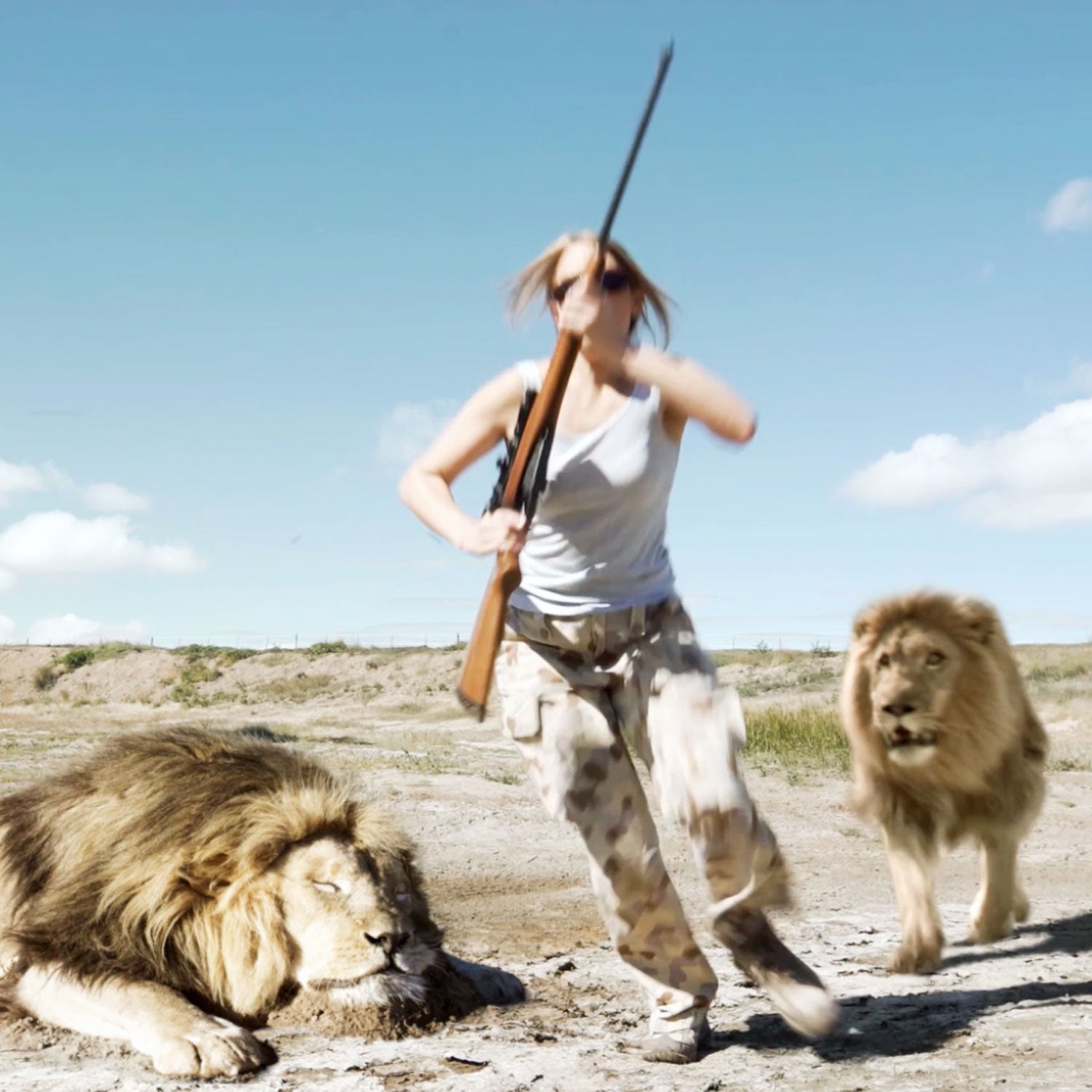A friend of yours posts a video he came across, and it’s incredible. A snowboarder meanders down some slopes, listening to music on her headphones. She’s shooting herself with a GoPro on a selfie stick, completely unaware that a massive grizzly bear has begun to chase her. She placidly sings along with her music as the bear gains on her, and just before it gets too close, she hits a steep spot and accelerates. The bear gives up the chase. Unbelievable, right? Well, yes, it should be, as the whole thing was faked by an Australian post-production company.
We’ve all known that photo fakery has existed practically since photography was invented, but for many years you could more or less trust your eyes with video. Of course, events could be staged, but truly realistic video manipulation was more or less limited to Hollywood studios like Industrial Light and Magic, with huge budgets and access to supercomputers.
In the last decade, though, home computers have only gotten more powerful. Mostly that’s a good thing, as it’s democratized high quality video-making for a much broader spectrum of artists. But of course, it also means that now anyone with a MacBook Pro and some skills in post-production software like Adobe After Effects can fake their way into the spotlight.
https://youtube.com/watch?v=ccENfRThXOk
That’s something the decided to explore in a two-year project that they call “The Viral Experiment.” Over that period of time, they quietly released eight videos on seemingly random YouTube channels. There’s a good chance you’ve seen one of them, as collectively, the fake videos have racked up more than 200 million views and received massive amounts of mainstream news coverage. But we’ll come back to that in a sec.
There’s a common thread in all of the videos: they’re all short and feature shaky, handheld shots. There’s a two-fold reason for that. For starters, it lends a look of authenticity. It looks like some amateur is just out there messing around with their GoPro. But then something incredible happens—something incredible that's actually been inserted with computers. The shakiness of the camera makes it all seem real because most people don’t realize that you can add CGI into something that bouncy and it’ll still look good. The other side is that the shakiness actually helps to hide flaws. If the footage doesn’t quite match, it’s tougher to lock onto something and really analyze it. The one time they put the camera on a tripod was for this “” video, and it looks completely hokey and fake (but it still garnered 10 millions views).
But it's one thing to fool a bunch of people at home on their computers and it’s quite another to have major news outlets take the bait. Viewers trust that the things that make it onto TV news (or reputable blogs and websites) have been vetted by experts who know what they’re doing. Well, take a look at Woolshed's video above. You can see by the sheer volume of media coverage these eight videos suckered a lot of “experts.” As viewers and readers, we need to demand better. I know that the news cycle moves fast, and everyone wants to be first to report on a pending viral sensation, but it’s journalists’ obligation to do due diligence, because this kind of thing feeds on itself. It also makes these reports look exceedingly gullible. [Ed. note: ���ܳٲ��������is proud to say we never bit and published any Woolshed viral videos.]
While some of videos that Woolshed made seem pretty authentic (the is probably the most realistic looking), some of them are really bad and shouldn’t have fooled anyone. This “” features wall-to-wall lousy, unbelievable acting. It baffles me how that could fool anyone, and yet, it’s racked up more than 20 million views. Same with the “” (40 million views). The underwater shots of the shark look really good, but as soon as anyone talks you’ve got to know that something is up (I've never seen anyone yell, ������������!��less convincingly).
Of course, not everyone bit, but that only helped the spread. “It’s worth noting that each video was always accompanied by healthy public debate around its authenticity, and that only added another dimension to the entertainment value,” says Woolshed's Dave Christison. This is certainly an interesting takeaway, but don’t be fooled into thinking that their ultimate goal was an altruistic social experiment. “We wanted to discover if there was a common formula that ran through highly snackable and shareable content,” says Woolshed's Dave Christison. “It’s been great for business too.”
Woolshed is a post production company. By showing that they can cheaply make videos that go viral, they become very attractive to those looking to advertise. Don’t be surprised if the next viral video is an alligator gnawing on a can of Coca-Cola, is what I’m saying.
I have no doubt that companies will continue harnessing “movie magic” to gain viral attention, and news outlets will probably continue sharing it for their own traffic without vetting the stuff. There’s an unfortunate side-effect to this, and it’s the same argument we made in our 2009 piece about manipulated photos. These fakes may end up giving a black eye to people who really are putting themselves out there in incredible situations and who really are shooting amazing things. If a TV news studio has been burned by fakes one too many times, when something authentic comes along that really does deserve the coverage, the station may decide to pass rather than risk looking the fool again. That would be a real shame, because those are the stories that deserve to be told, and those are the images that warrant making their way into our collective consciousness. If we start seeing less of the real deal because of a handful of very prominent fakes, we all lose.


